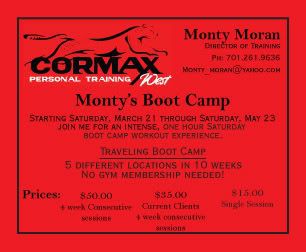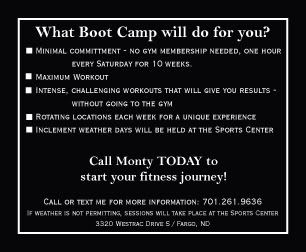I just had to dig this one up out of my files.
Beware it’s disturbing!
- Monty Moran
By: Brie Cadman (View Profile)
Updated August 2, 2008
The other day I was snacking on some bright orange “nacho” flavored tortilla chips when I decided to do something very stupid. I flipped the bag over and read the ingredient list. Given the color, I wasn’t expecting to find nature, distilled, but the double-digit list of ingredients, many of which I hadn’t seen since working in a lab, was still disconcerting. In fact, some of the chemicals were the same ones that drove me out of the lab. (You can only read “extreme neurotoxin” and “mutagenic” so many times before pondering a career change.) What were they doing in my chips?
A tortilla chip seems so simple (corn, oil, salt) but the intersection of synthetic chemistry and food manufacturing has taken us far away from simple and much closer to complex. Instead of nacho cheese, we eat synthesized substances meant to approximate the flavor or texture of cheese, no milk products involved. Preservation, emulsification, hydrogenation, distillation, and esterification has resulted in some good things (like reduced spoilage and food borne diseases), but has also resulted in some questionable food additives like the compounds below.
I Can’t Believe It’s Not—Diacetyl!
Diacetyl is the chemical that gives microwave popcorn that delicious buttery flavor without the use of any butter. Unfortunately, extensive exposure to diacetyl can lead to a serious, irreversible, and rare condition known as bronchiolitis obliterans. First seen in workers at a microwave popcorn packaging plant, the condition is commonly known as “popcorn lung.” One consumer (who, somewhat freakishly, ate around four bags of microwaved popcorn a day) has developed the disease, and researchers recently discovered that small amounts of diacetyl can cause lung and airway damage in mice.
- The Alternative? OSHA didn’t do crap to protect workers, but lawsuits and negative publicity scared some manufacturers into removing the compound from their packaged kernels. However, diacetyl abounds in packaged foods with fake butter flavor, often under the guise of “natural and artificial flavoring.” As for popcorn, pop your own and use the real golden stuff. Butter=good; popcorn lung=bad.
Would You Like Diet or Regular Benzene?
Benzene is an industrial solvent and a known carcinogen, so food companies generally try to keep it out of their products. However, two chemicals found in soda, sodium benzoate (a preservative) and ascorbic acid (vitamin C), can react to form benzene, especially in the presence of heat or light. In 2007, Coca-Cola and Pepsi agreed to settle lawsuits brought against them after benzene was detected in their products. The suit alleged that Pepsi’s Diet Wild Cherry drink had benzene levels nearly four times the maximum level set by the Environmental Protection Agency for drinking water. Oopsy. Both companies agreed to reformulate; however, thousands of soft drinks containing benzoate and citric acids are still on the market.
- The Alternative? Probably most Coke and Pepsi products are “safe” (who knows what’ll turn up next!), but it’s a good idea to check the label.
Gone Fishin’—For Silly Puddy
The sticky texture of Silly Puddy is due, in part, to a widely used silicone-based polymer called polydimethylsiloxane (PDMS). In addition to Silly Puddy, it is also found in caulks, adhesives, cosmetics, silicone grease, knuckle replacements, silicone breast implants, and … in McDonald’s Fish Filet Patties. They add it as an “antifoaming agent.” I had to look this one up (why is the fish foaming?) and as it turns out, foam, produced when vats of liquids are mixed or agitated, is a big problem for large scale food manufacturers. Lots of foam means frying vats can’t be filled to capacity, meaning fast food restaurants can’t fry as many fish (potatoes, apple crisps, whatever) as mechanically possible. Hence the need for silicone oils like PDMS.
- The Alternative? The FDA allows up to ten parts per million of anti-foaming agents to be used in food products; they’re found in many processed foods. Though not harmful at these levels, their use does increase the amount of acrylamide (a naturally occurring but nasty chemical) that is formed during frying.
Ahhh, Olestra
Only in America would an indigestible molecule that inhibits the absorption of vitamins and minerals, causes abdominal cramping, loose stools, and gas take in over $400 million in its first year. Only in America would a chemical most closely associated with two words—anal leakage—still have a chance in the food market. (Saw it yesterday in a can of Pringles Light, giving new meaning to the “once you pop, you can’t stop” slogan.) Interestingly, Olestra was first filed with the FDA as a drug, not a food product. What a tangled web we weave…
- The Alternative? Lick some raw chicken to get your anal leakage fix.
Too Sweet to Be True
Artificial sweeteners are generally considered safe (save for saccharin, which has that pesky “has been shown to cause cancer in lab rats” warning). However, two studies indicate they may not exactly be as guilt-free as once imagined.
The first study showed that, compared with those who drank no soda, people who consumed one or more sodas a day—diet or regular—had a 50 percent higher risk of metabolic syndrome, a group of risk factors characterized by excessive abdominal fat, high blood pressure, and high glucose. Soda companies balked—how can diet beverages cause these things when they contain no calories? Logic would side with them, except for study number two, done in rats. It showed that rats fed with foods containing artificial sweeteners were more likely to overeat compared with those rats fed food containing real sugar. Reason? Sugar triggers our innate system to recognize sweet calories and restrict further food consumption; fake chemicals don’t trigger the “eat less” mechanism.
- The Alternative? Calorie free sodas don’t add on weight, excess food does. However, if you’re drinking lots of diet soda and still loosening up the belt, you may want to rethink the diet approach. (Also, see benzene above.)
Hydrogenation Station
Oils are liquid at room temperature, while fats, like butter and lard, are solid. One way to make vegetable oil into a semi-solid compound, perfect for use in long-lifed packaged foods, is to hydrogenate it. Partial hydrogenation gets rid of some of the good unsaturated fats and also creates trans fats, the black sheep of the fat world, thought to be more deleterious to the old ticker than lard.
- The Alternative? Bad press and labeling requirements have caused many food companies to remove trans fats from their products; check labels. (Kraft Fat Free Singles, for instance, contain no saturated fat, but do contain partially hydrogenated oils.) Regular, unsaturated vegetable oil is the perfect alternative for frying, yet restaurants can still use the partially hydrogenated stuff, unless the FDA, which still labels the oil as “generally recognized as safe,” steps up and bans it.
Butylated Hydroxyanisol (BHA)
BHA is an antioxidant that prevents fats and oils from spoiling. BHA is added to packaged foods, baked goods, some cereals, and meats as a preservative. It has been found to cause cancer in laboratory rodents; however, it causes cancer in an organ that humans don’t have, so it’s hard to translate the research into human populations. The National Toxicology Program states that BHA is “reasonably anticipated to be a human carcinogen based on sufficient evidence of carcinogenicity in experimental animals.” Funny, it’s still in our food chain.
- The Alternative? Check labels and (if this hasn’t already become clear) avoid packaged foods that have a shelf life lasting longer than the average tenure of a Supreme Court Justice.
As with most chemicals, dose makes the poison; small amounts of the above chemicals ain’t going to kill you (at least according to the FDA). But neither would eating a piece of real cheese.


